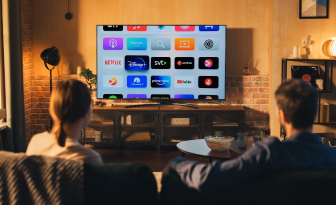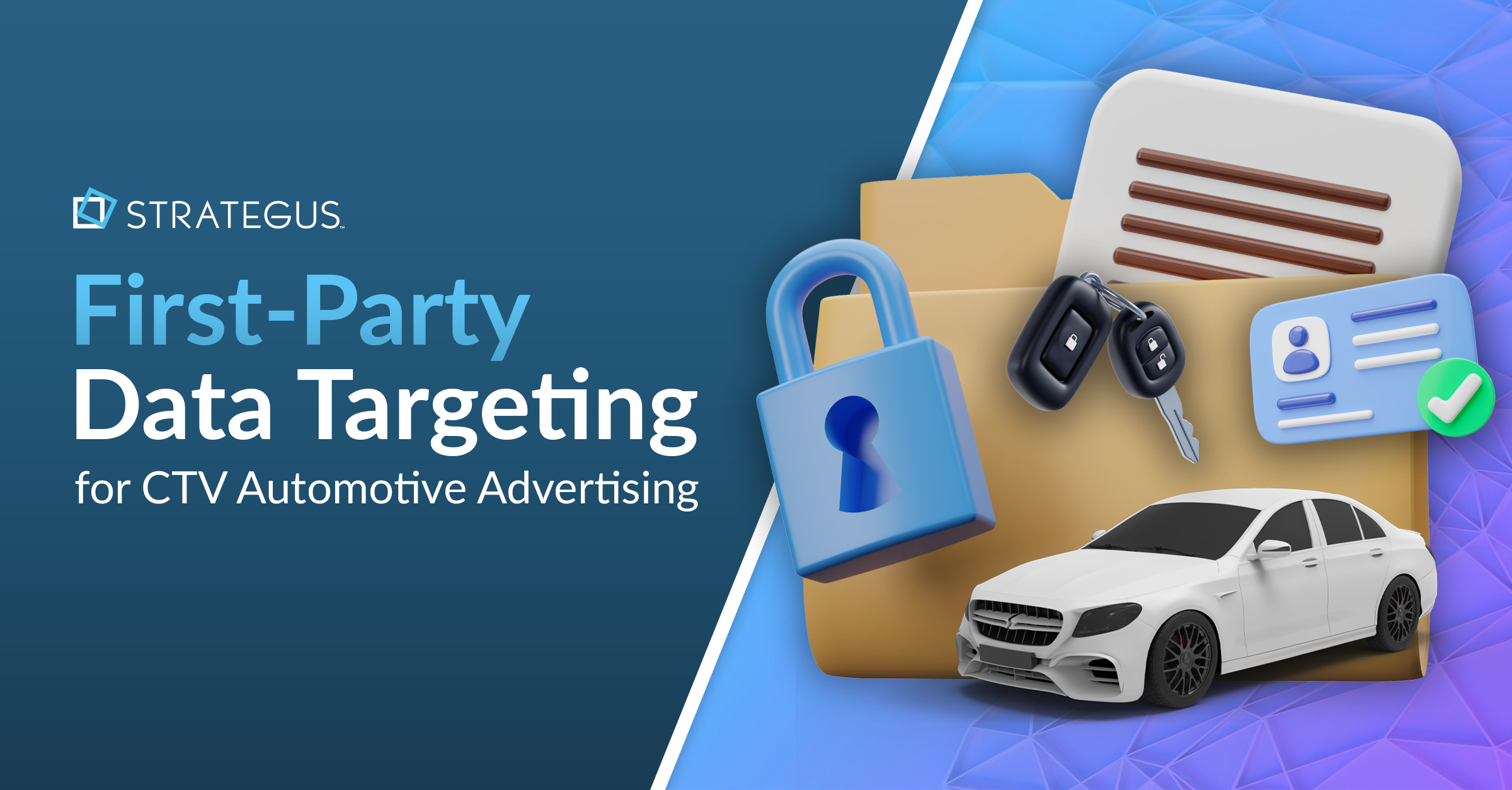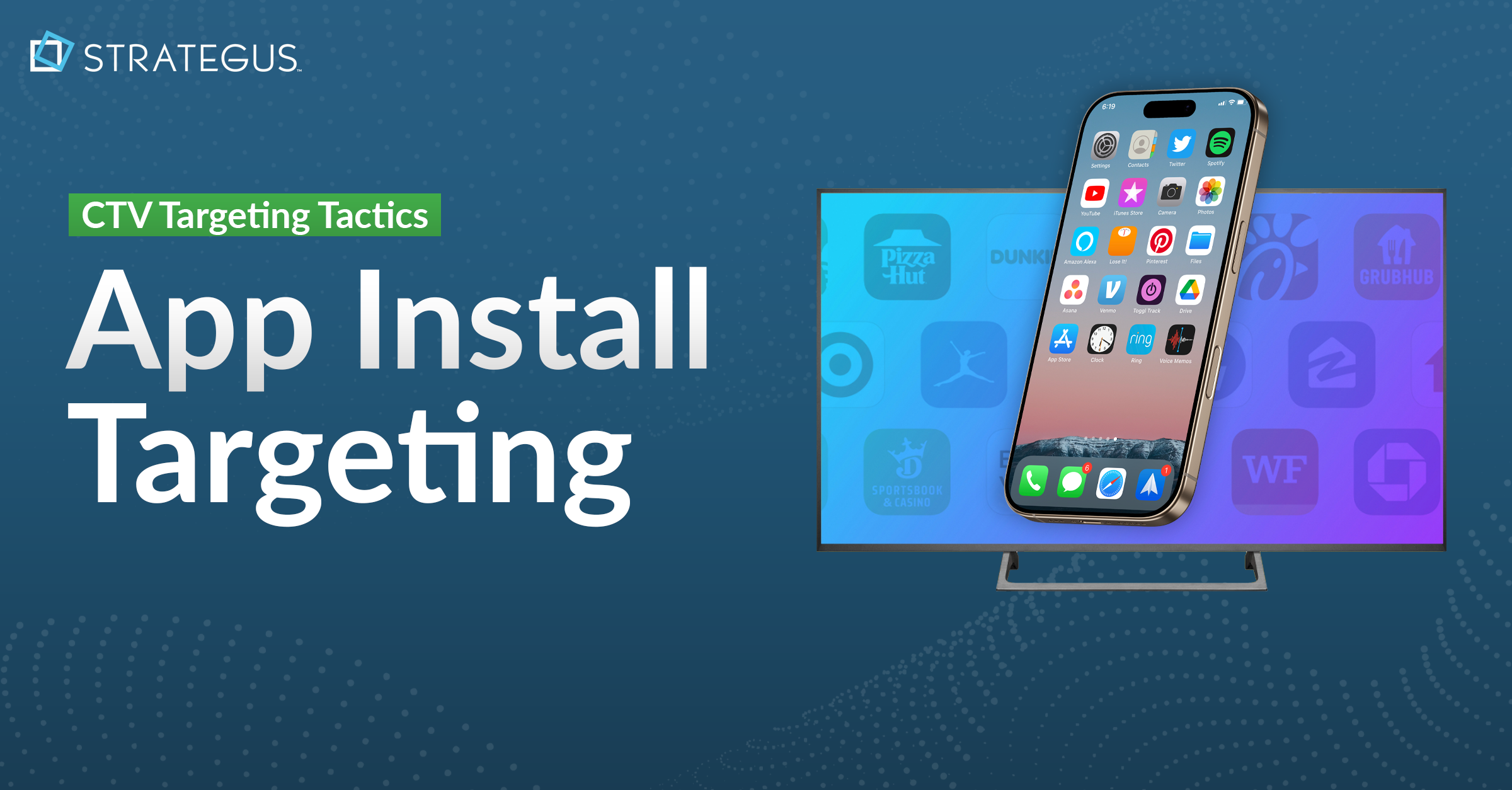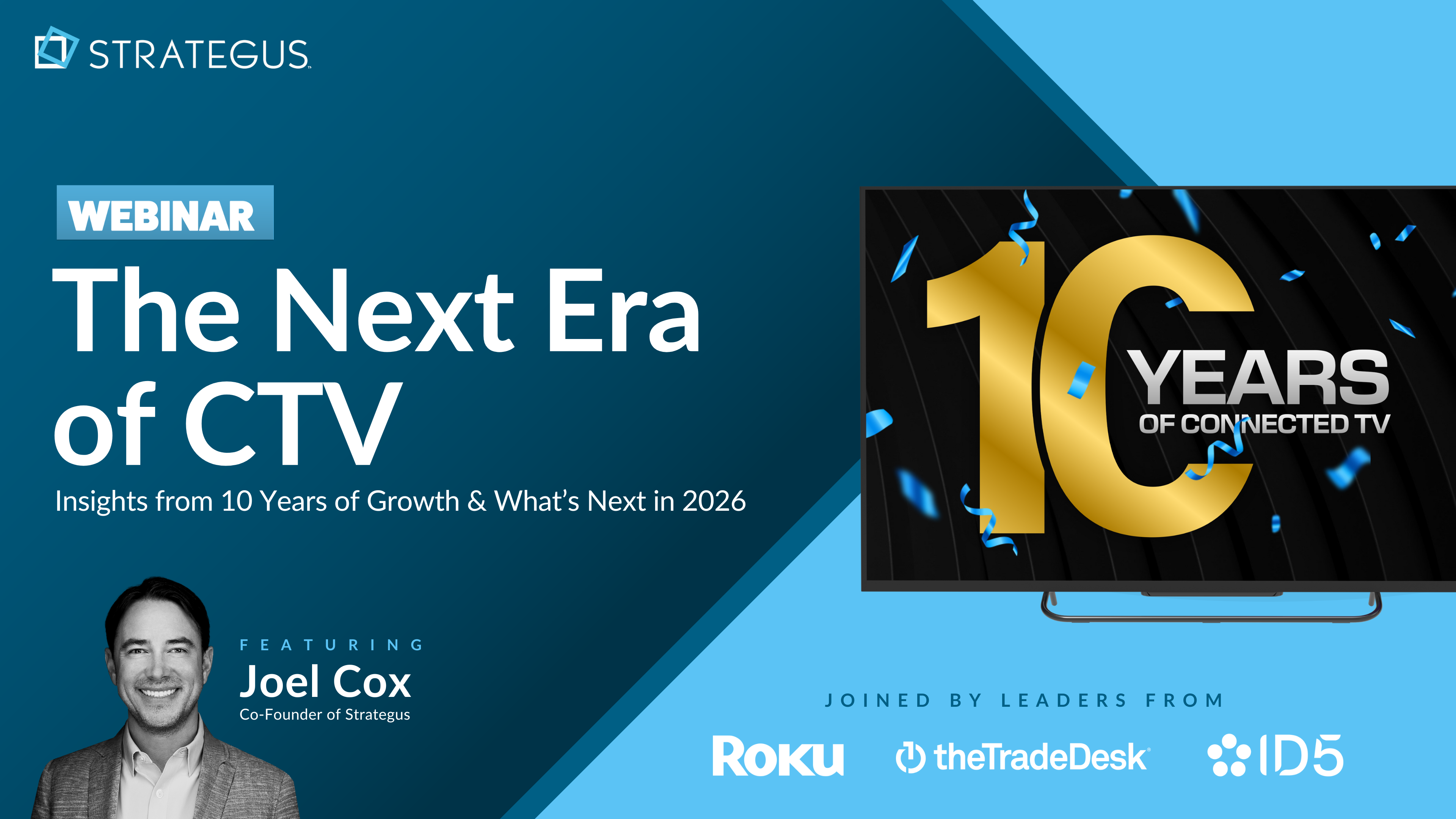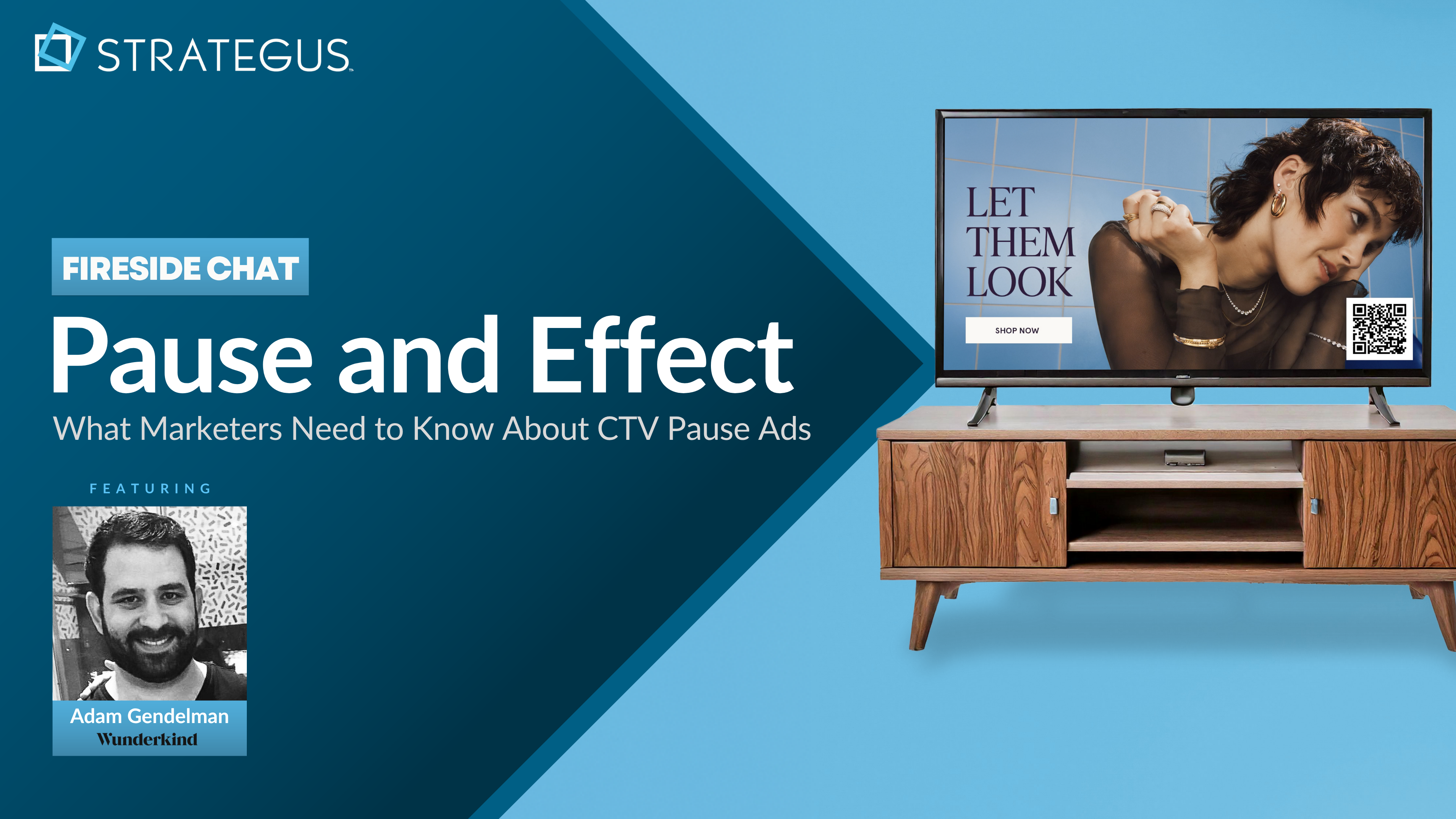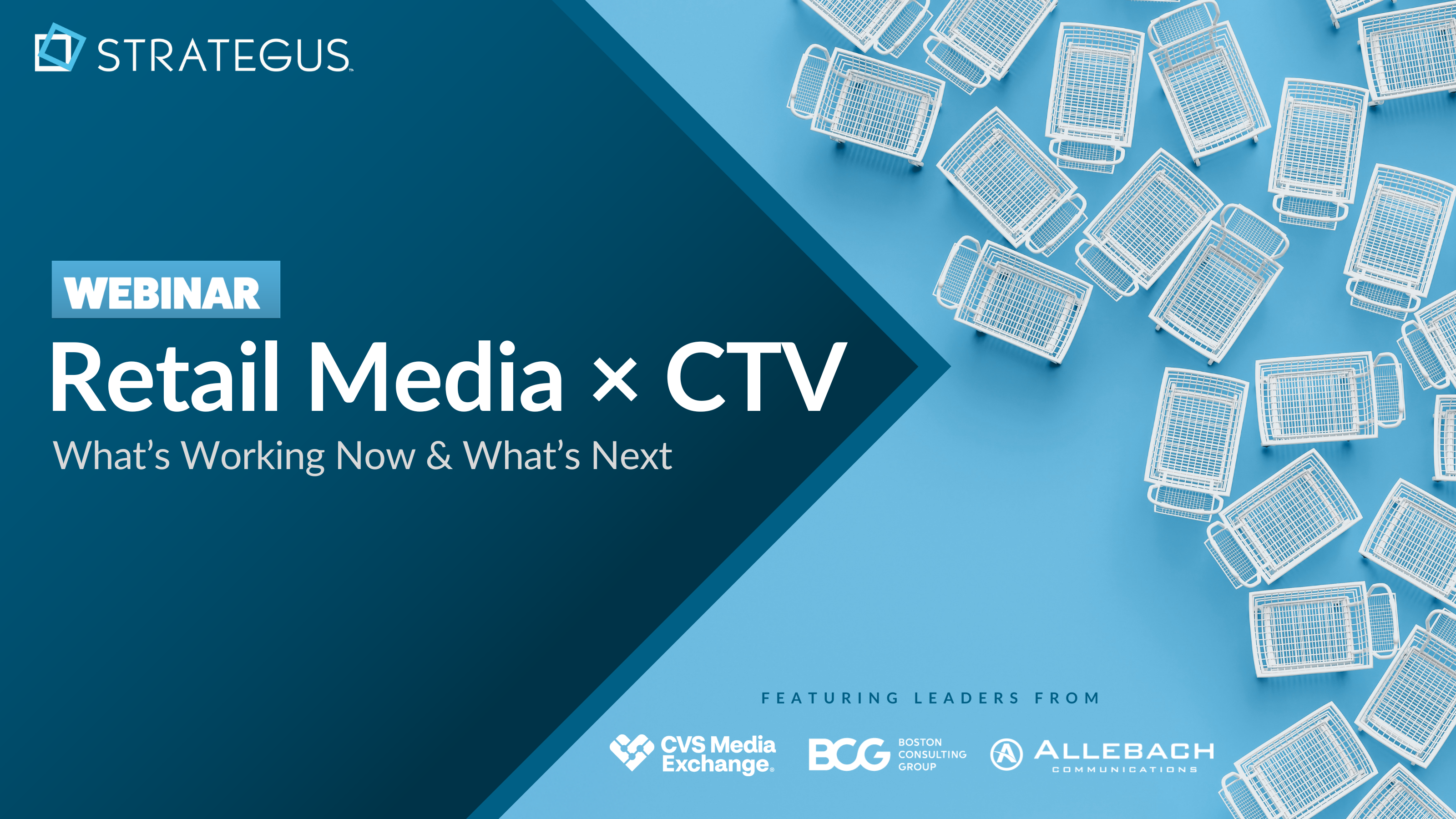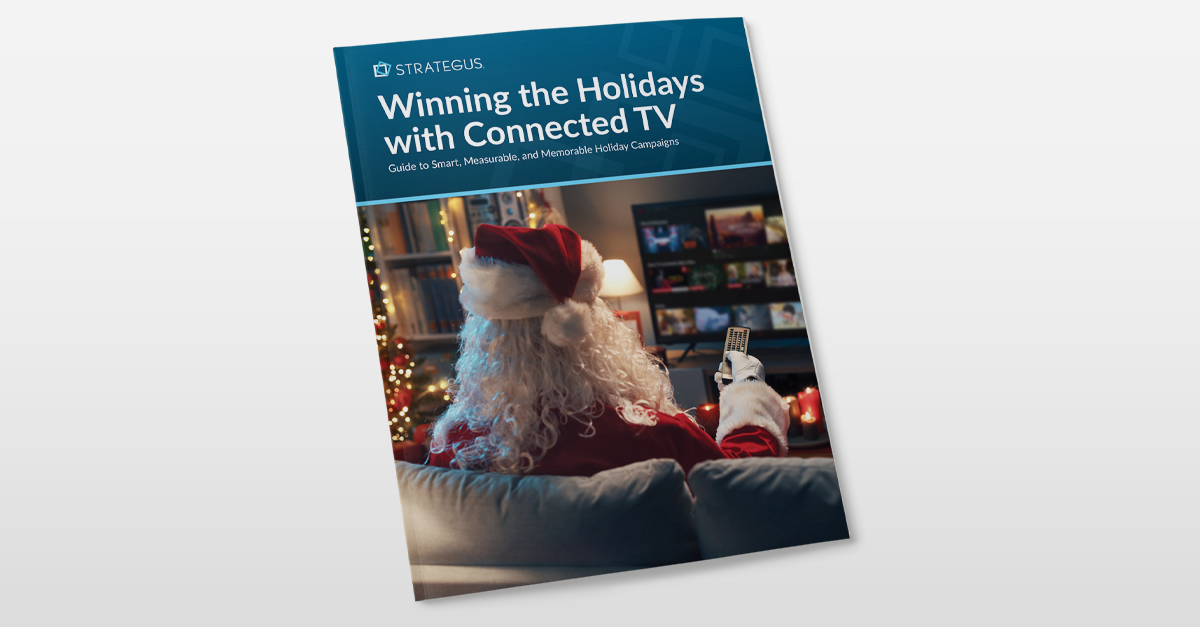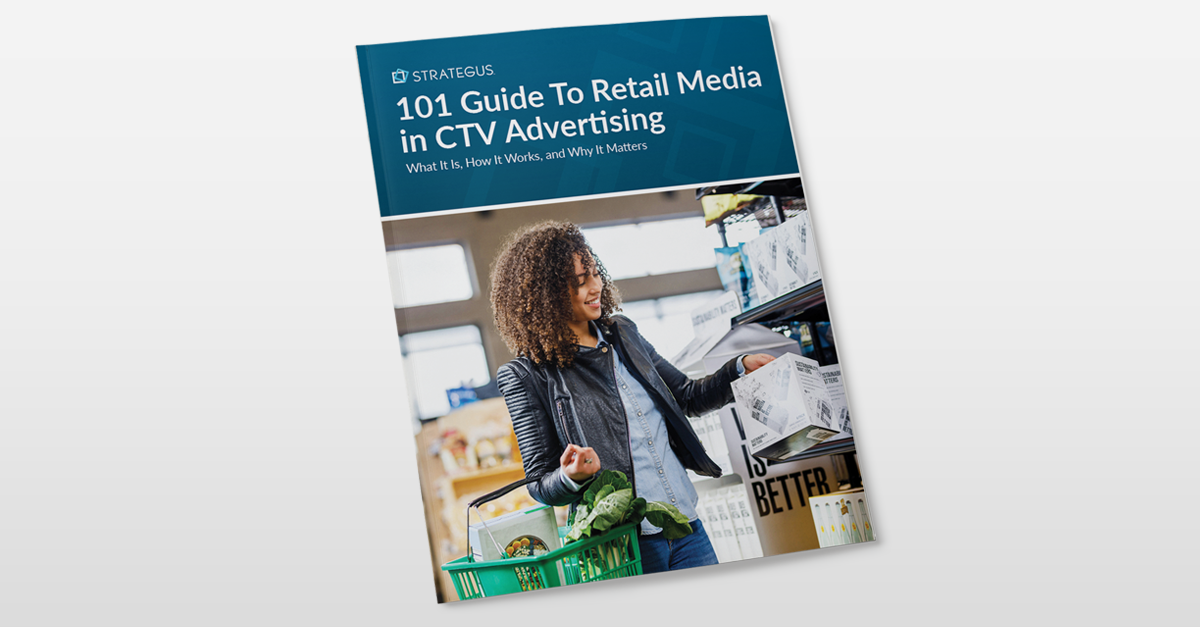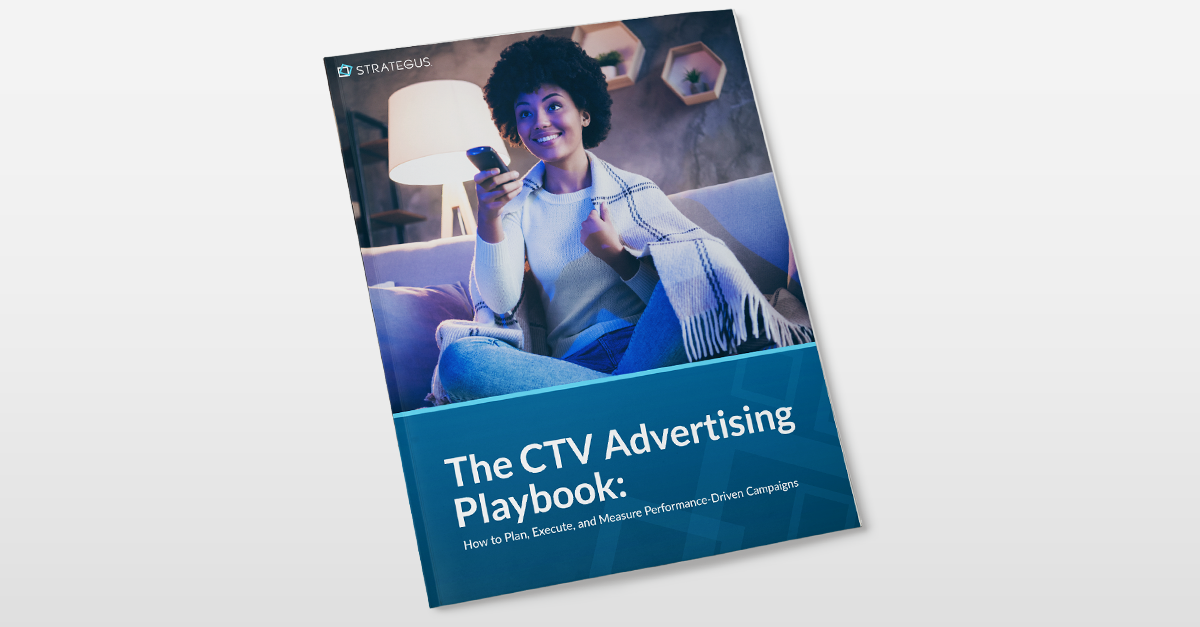- Home
- Strategus Blog
- What Are Programmatic Video Ads & How Do They Work?
What Are Programmatic Video Ads & How Do They Work?
14 minutes read
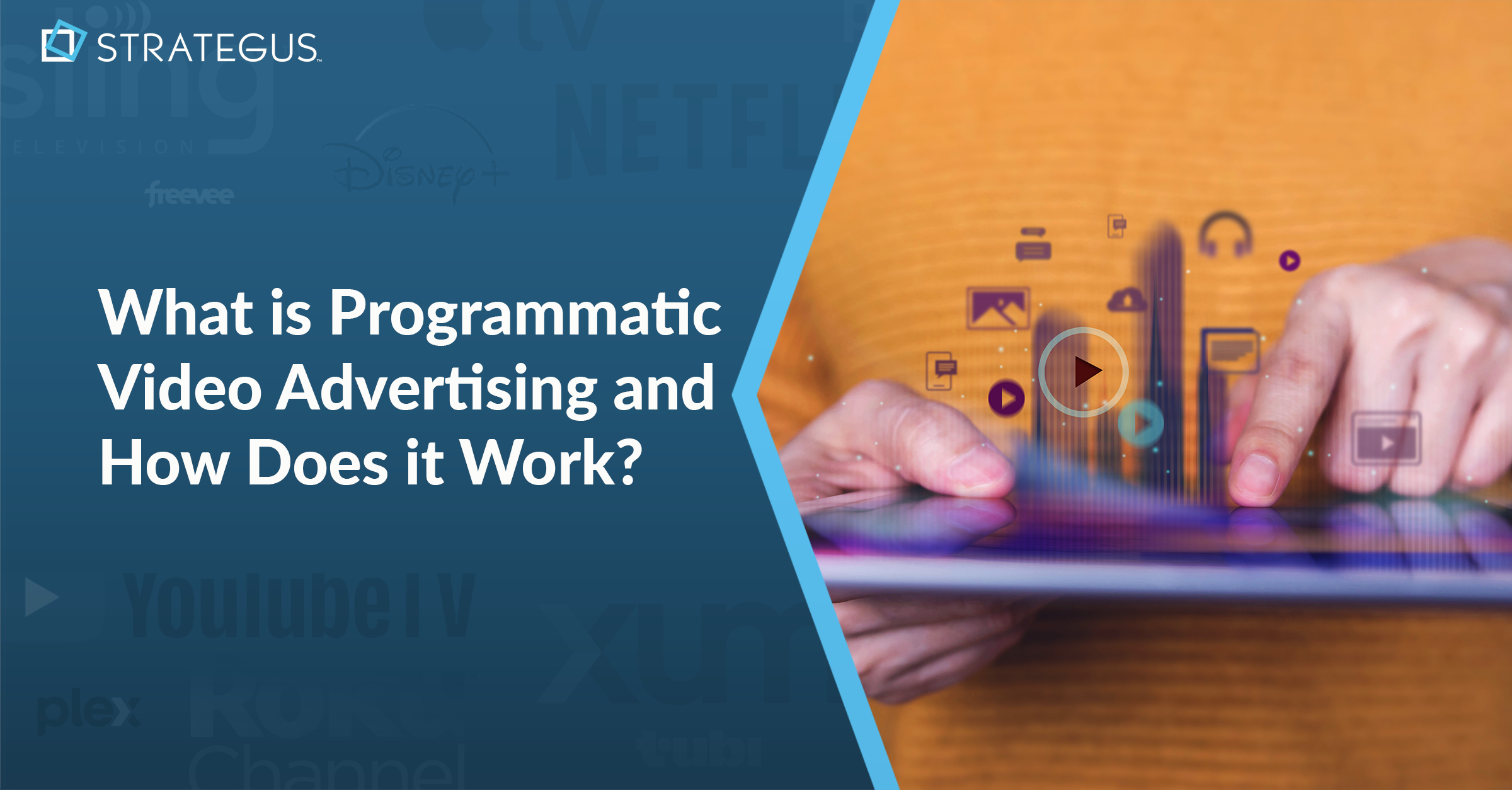
A CMO in 2010 trying to buy video ads online used to go through an entirely different process. They'd need separate deals with YouTube, Hulu, and a dozen other platforms. Different contracts, different formats, different metrics. By the time campaigns launched, half their budget was eaten up by administrative headaches and their target audience had already moved on to the next big platform.
Those days are officially buried under streaming services, second screens, and viewers who've become accustomed to avoiding traditional commercials.
While viewers are scattered across hundreds of platforms and devices, advertisers actually gained more control than ever before. Programmatic video advertising has built an entirely new playing field where a local bakery can target bread lovers within a five-mile radius just as easily as Nike can launch a global campaign.
But, for every marketer who's mastered this technology, there are dozens more staring at dashboards full of acronyms (DSP? SSP? RTB?), wondering if they accidentally stumbled into a computer science exam. The good news? Understanding programmatic video advertising isn't nearly as complicated as the industry makes it seem.
We're going to break down the entire programmatic ecosystem and explain how those lightning-fast auctions work and why your competitors seem to be everywhere your customers are. Here’s everything you need to know about programmatic video advertising.
Key Takeaways
- Programmatic video advertising automates ad buying using real-time bidding and data-driven targeting to reach specific viewers across devices.
- It replaces manual negotiations with instant auctions between Demand-Side Platforms (DSPs) and Supply-Side Platforms (SSPs), optimizing reach and efficiency.
- Formats include in-stream, out-stream, interactive, and rewarded ads—each suited for different goals, contexts, and levels of viewer engagement.
- Marketers benefit from precision targeting, campaign scalability, real-time optimization, and cross-device insights that traditional video buying can't match.
- Best practices include testing creative early, layering smart targeting, using real-time performance triggers, and measuring beyond basic impressions.
- Strategus offers fully managed programmatic video services, from strategy to attribution, so you get expert-driven performance without operational headaches. Talk to a Strategus expert today.
What Is Programmatic Video Advertising?
Programmatic video advertising is the automated buying and selling of video ad space using software and data. Instead of picking up the phone to negotiate with publishers, algorithms handle the entire process in real-time. The result? Your video ads reach the exact viewers you want, at the precise moment they're most likely to engage.
Think of traditional video buying as booking a hotel room months in advance. You pick a property, negotiate a rate, and hope it meets your needs when you arrive. Programmatic buying is more like using a ride-sharing app. You specify exactly what you need, when you need it, and technology instantly matches you with the best option available.
The magic happens through three core components working together:
- First, automation eliminates manual tasks and human error. No more spreadsheets tracking different publishers or insertion orders getting lost in email.
- Second, real-time bidding creates a competitive marketplace where your ads compete for viewer attention based on actual value, not predetermined rates.
- Third, data-driven targeting uses behavioral signals, demographics, and contextual information to ensure your message reaches receptive audiences.
This shift from buying ad space to buying specific audiences changes everything. Traditional buyers purchase blocks of inventory on specific websites or channels, hoping their target audience shows up. Programmatic buyers identify their ideal viewers first, then find them wherever they're watching video content. It's the difference between fishing with a net and fishing with a spear.
How Does Programmatic Video Advertising Work?
The entire programmatic process happens faster than you can blink. Let's walk through a real example to see how it unfolds.
Sarah in Denver clicks on a cooking video on her favorite recipe website. The moment she hits play, the publisher's system recognizes an opportunity to show an ad. This triggers a complex but lightning-fast chain of events.
The publisher's Supply-Side Platform (SSP) immediately packages information about this ad opportunity. It includes anonymous details about Sarah, such as her approximate location, the device she's using, the type of content she's watching, and behavioral patterns from her browsing history. This package, called a bid request, gets sent to multiple ad exchanges simultaneously.
Ad exchanges act as digital marketplaces connecting publishers with advertisers. They receive the bid request and instantly forward it to the relevant Demand-Side Platforms (DSPs). These DSPs represent different advertisers, each with specific campaign goals and target audiences.
Each DSP analyzes the bid request in milliseconds. A kitchen appliance brand's DSP sees that Sarah frequently visits cooking sites and recently searched for "best blenders." Their system calculates that Sarah fits their target audience profile and authorizes a bid of $12 CPM. Meanwhile, a meal kit delivery service's DSP notices Sarah's interest in quick recipes and suburban location. They bid $15 CPM.
The auction happens instantly. The meal kit service wins with the highest bid, and their video ad gets selected. The winning creative loads into the video player, and Sarah sees a 15-second ad for convenient meal solutions before her recipe video begins. From click to ad display, the entire process took less than 100 milliseconds.
Types of Programmatic Video Ads
Programmatic video comes in many flavors, each suited to different marketing objectives and viewer experiences. Understanding these formats helps you choose the right approach for your campaigns.
In-Stream Video Ads
In-stream ads are the closest relatives to traditional TV commercials. They play within video content, typically in streaming environments or on platforms like YouTube. These ads command viewer attention because they interrupt the content experience.
Pre-roll ads appear before the main content begins. Viewers are generally more tolerant of these because they haven't yet invested in watching. Most pre-rolls run 15-30 seconds, though 6-second bumper ads are gaining popularity for their brevity. The key to pre-roll success is capturing attention immediately since viewers often have the option to skip after five seconds.
Mid-roll ads interrupt content at natural break points. These typically perform best because viewers are already engaged and less likely to abandon the content. Publishers carefully place mid-rolls to minimize disruption, often at scene transitions or natural pauses. The trade-off for advertisers is higher engagement rates and completion rates compared to other placements.
Post-roll ads play after the content ends. While they have lower view rates since many users click away, those who do watch tend to be highly engaged viewers. Post-rolls work well for deeper storytelling or calls-to-action that require more consideration.
Out-Stream Video Ads
Out-stream represents a massive expansion of video advertising real estate. These ads appear outside traditional video players, bringing video content to text-based environments. They've opened up premium publisher inventory that previously couldn't support video advertising.
The most common out-stream format auto-plays (usually muted) as users scroll through articles or social feeds. The video pauses when it leaves the viewport and resumes when it is visible again. This user-friendly approach respects the browsing experience while delivering brand messages. Publishers love out-stream because it monetizes existing content without requiring video production.
Native out-stream ads blend seamlessly with editorial content. They might appear between paragraphs of an article or within a social media feed. The best executions match the look and feel of surrounding content while clearly marking themselves as advertising.
Interactive and Rewarded Video Ads
Interactive video ads transform passive viewing into active engagement. Viewers might click hotspots to learn more about products, answer polls, or even make purchases directly within the video player. These formats generate valuable engagement data while creating memorable brand experiences.
Rewarded video has become the darling of mobile gaming and apps. Users voluntarily watch ads in exchange for in-game currency, extra lives, or premium content access. This value exchange creates a positive association with the advertiser since viewers choose to engage. Completion rates for rewarded video often exceed 90%, far surpassing forced ad formats.
Key Benefits of Programmatic Video Advertising
The shift to programmatic video isn't just about keeping up with technology. It delivers tangible benefits that directly impact campaign performance and marketing ROI.
Precision Targeting That Actually Works
Traditional video buying relies on broad assumptions about who watches specific channels or visits certain websites. Programmatic flips this model entirely. Instead of hoping your target audience happens to be watching, you identify exactly who you want to reach and find them wherever they're consuming video content.
This precision extends far beyond basic demographics. You can target based on shopping behaviors, like people who've researched luxury cars in the past month. You can reach users based on life events, such as recent movers or new parents. Geographic targeting goes down to the zip code or even specific business locations. Time-based targeting ensures your breakfast product ads run in the morning when they're most relevant.
The real power comes from combining multiple targeting parameters. A regional bank might target high-income individuals within 10 miles of their branches who've recently searched for mortgage rates. This laser focus means every impression counts toward genuine business objectives.
Scale and Efficiency That Transforms Budgets
Programmatic's automated approach dramatically reduces the cost of reaching audiences at scale. Traditional video buying often requires large minimum commitments and includes significant waste on viewers outside your target market. Programmatic lets you start small, test what works, and scale winners.
The efficiency gains are striking. Manual insertion orders that took days to process now execute in seconds. Campaign optimizations that required new contracts now happen with a few clicks. This operational efficiency translates directly to better pricing. You're not paying for a sales team's overhead or lengthy negotiation processes. More of your budget goes toward actual media.
Scale becomes accessible to advertisers of all sizes. A local business can run video ads with the same sophisticated targeting as national brands. Small test budgets can validate approaches before major investments. Geographic expansion happens instantly without new publisher relationships.
Real-Time Optimization Powers Performance
The ability to adjust campaigns in real-time fundamentally changes how advertisers approach video advertising. Traditional campaigns lock you into commitments regardless of performance. Programmatic campaigns evolve continuously based on actual results.
This optimization happens across multiple dimensions simultaneously. Underperforming creative gets paused while winners get more budget. Targeting parameters adjust based on which audiences convert. Bids increase for high-value placements and decrease where performance lags. Even the times your ads run can shift to match when your audience is most responsive.
Cross-Device Intelligence Reveals True Impact
Modern consumers don't live on a single device. They might see your CTV ad during evening streaming, research on their phone during lunch, and purchase on their laptop that weekend. Traditional video metrics miss these connections entirely. Programmatic video advertising illuminates the full journey.
Cross-device tracking reveals how video exposure influences behavior across channels. You can see how a streaming ad drives mobile app downloads or store visits. Website visitors can be retargeted with video ads on their connected TVs. This orchestrated approach multiplies the impact of every advertising dollar.
The insights extend beyond direct response metrics. Brand lift studies show how video exposure improves awareness and consideration. Attribution modeling reveals video's assist role in conversions, primarily credited to other channels. This complete picture justifies video investment and guides future strategy.
Partnering with Strategus for Programmatic Video Advertising
While programmatic video advertising offers powerful tools for targeting and efficiency, navigating the ecosystem is far from simple. From choosing the right platforms and inventory sources to managing data integrations, creative specifications, bidding strategies, and attribution models, there are countless moving parts that impact the outcome of your campaigns.
In short, the results you get depend heavily on the expertise behind the execution. That’s why working with Strategus is a smart move.
We provide fully managed programmatic video advertising services that eliminate the guesswork and reduce the strain on your internal resources. Our team acts as an extension of yours, handling campaign strategy, execution, optimization, and performance measurement from start to finish. We bring advanced targeting, cross-device retargeting, premium CTV inventory, and real-time attribution under one roof, giving you the visibility and control you need without the operational burden.
Whether you're running brand-awareness campaigns or performance-driven initiatives, Strategus ensures your video advertising investment is spent wisely and effectively.
Let us handle the complexity while you focus on results. Speak to a Strategus expert today and learn more about how we can help.
Programmatic Video vs. Traditional Video Buying
The differences between programmatic and traditional video buying go far beyond automation. Each approach represents a fundamentally different philosophy about how advertising should work.
Speed Changes Everything
Traditional video buying moves at human speed. Sales representatives schedule calls, proposals get drafted, contracts require legal review, and insertion orders process manually. A typical campaign might take three to four weeks from initial contact to going live. Changes require similar cycles.
Programmatic operates at digital speed. Campaign setup takes hours, not weeks. New creative uploads and plays within minutes. Targeting adjustments happen instantly. This velocity enables a test-and-learn approach impossible with traditional buying. You can launch multiple creative variations, identify winners within days, and scale success immediately.
The speed advantage compounds during crucial periods. Holiday campaigns can adjust to real-time sales data. Breaking news creates content opportunities you can capitalize on immediately. Competitive responses happen in hours rather than waiting for the next buying cycle.
Flexibility Enables Strategy
Traditional video contracts lock advertisers into predetermined schedules and placements. You buy specific spots on specific properties for specific dates. Changes require contract amendments and often penalties. This rigidity forces advertisers to guess what will work months in advance.
Programmatic buying stays fluid throughout campaigns. Budget flows to what's working. Underperforming tactics pause without penalty. New opportunities get tested without lengthy commitments. This flexibility turns campaigns into learning systems that improve continuously.
Transparency Builds Trust
Traditional video buying often feels like a black box. You buy a schedule, ads run (hopefully), and weeks later, you receive a report showing impressions delivered. Questions about actual viewership, audience composition, or competitive context go unanswered.
Programmatic platforms provide radical transparency. Real-time dashboards show exactly where ads run, who sees them, and how they perform. You can verify brand safety, analyze competitive dynamics, and validate that targeting works as intended. This visibility enables confident optimization and stakeholder communication.
Access Democratizes Opportunity
Traditional video buying favors large advertisers. Premium publishers maintain high minimums and prefer predictable revenue from major brands. Smaller advertisers get relegated to remnant inventory or priced out entirely. Sales teams naturally focus on their biggest opportunities.
Programmatic levels the playing field. The same premium inventory becomes accessible to advertisers of all sizes. Sophisticated targeting previously reserved for major campaigns becomes available to everyone. Small businesses compete for impressions alongside Fortune 500 companies, with the best bid winning regardless of advertiser size.
Best Practices for Programmatic Video Campaigns
Success in programmatic video advertising requires more than just understanding the technology. Here are some proven strategies to help maximize your programmatic investment.
Start With Creative That Commands Attention
The most sophisticated targeting in the world falls flat with weak creative. Programmatic's efficiency should free up budget for better content production, not excuse poor quality. The first five seconds determine whether viewers engage or tune out, making those opening moments crucial.
Consider how people actually consume video content. Most mobile video plays without sound initially, so your visual story needs to work silently. Bold graphics, clear product shots, and on-screen text ensure your message gets through even on mute. Captions aren't just for accessibility anymore; they're essential for engagement.
Length matters less than message clarity. A focused six-second bumper can outperform a meandering 30-second spot. Test multiple lengths against your objectives. Brand awareness might need just quick reminders, while consideration requires deeper storytelling. The key is matching the format to the viewer's mindset at each touchpoint.
Production value still matters in programmatic. While you don't need Hollywood budgets, professional editing, good lighting, and clear audio prove credibility. Amateur-looking ads undermine sophisticated targeting by making your brand appear less trustworthy. Invest in quality that reflects your brand standards.
Layer Targeting for Precision Without Waste
Programmatic offers hundreds of targeting options, but more isn't always better. Smart campaigns layer complementary data points that genuinely indicate purchase intent. Geographic targeting provides the foundation—a pizza chain targets delivery zones while a B2B software company focuses on business districts.
Behavioral signals add the next layer of qualification. Recent search behavior reveals active interest. Website visits indicate the consideration phase. App usage patterns suggest lifestyle fit. The trick is choosing behaviors that truly correlate with conversion, not just vague interest. Someone searching "best running shoes" shows stronger intent than someone who simply visited a fitness website.
Contextual alignment amplifies message relevance. Your organic food ads perform better alongside healthy recipe content than general news. Travel ads resonate during vacation planning content. This environmental targeting works because viewers are already in the right mindset for your message.
Custom audiences unlock programmatic's full potential. Upload your customer lists to find similar prospects. Pixel your website to retarget visitors with tailored messages. Create sequential campaigns that tell stories across multiple touchpoints. First-party data transforms programmatic from efficient reach to personalized conversation.
Optimize Budgets Through Strategic Testing
Programmatic's flexibility enables sophisticated budget strategies impossible with traditional buying. Smart advertisers run constant tests to improve performance. But testing without structure wastes money and messes with the results.
Establish clear testing hierarchies. Test big variables first; completely different audiences or creative concepts. Once you identify winning directions, test smaller optimizations within those frameworks. This approach maximizes learning while minimizing waste. Here are three ways to optimize your budget:
- Frequency capping prevents oversaturation while ensuring sufficient exposure. The optimal frequency varies dramatically by objective and product category. A simple consumer product might achieve maximum impact with 3-4 weekly exposures. Complex B2B solutions could require 10-12 touches before driving action. Monitor frequency carefully; the point of diminishing returns arrives quickly.
- Dayparting budgets to audience behavior multiplies efficiency. B2B campaigns concentrate spending during business hours when decision makers are active. Restaurant ads increase before meal times when hunger drives decisions. Entertainment options peak during evening planning hours. Don't assume traditional TV dayparts apply; your audience data reveals when they actually consume content.
- Performance triggers should automatically shift budgets. Set rules that increase bids on high-converting placements. Reduce spending when metrics lag. Pause underperformers entirely after sufficient data. This systematic optimization ensures budgets flow to what works without constant manual intervention.
Measure What Matters to Your Business
Programmatic generates mountains of data, but only some metrics matter. Vanity metrics like impressions or even click-through rates mean little without business context. Define success metrics before launching, not after.
Attribution windows, one of the first metrics you should look at, must match your sales cycle reality. A convenience store promoting daily deals needs short windows; perhaps 1-3 days. Luxury car dealers could justify 90-day windows given longer consideration periods. Don't default to platform standards that might not fit your business.
View-through attribution is another great metric to track that captures a video's true influence. Unlike clickable display ads, video often drives action without immediate clicks. Someone who sees your restaurant ad might not click, but visit for dinner. Proper view-through tracking reveals these connections. Balance attribution credit between view and click actions based on your typical customer behavior.
Cross-device measurement is the final piece of the puzzle and reveals the complete impact story. That CTV ad might not drive immediate TV conversions, but it could spark mobile searches and desktop purchases. Unified measurement across devices shows how video advertising influences the entire customer journey. This complete view often justifies higher video investment by revealing hidden value.
Build Campaigns That Learn and Improve
The most successful programmatic campaigns treat each flight as a learning opportunity. You should document what works and why, test hypotheses systematically, and build institutional knowledge that improves future performance.
The first step here is to create feedback loops between campaign results and creative development. If certain messages resonate with specific audiences, develop variations on those themes. If particular visual styles drive engagement, incorporate those elements across campaigns. Let data guide creative evolution.
After that, competitive monitoring can help bring up opportunities and threats. Programmatic's transparency lets you see where competitors advertise and how frequently. Notice gaps in their targeting or messaging that you could exploit. Adjust your strategy based on competitive dynamics rather than operating in isolation.
Another underrated strategy is to watch out for seasonal patterns that emerge through consistent measurement. Your audience might engage differently during holidays, weather changes, or cultural events. Build calendars that anticipate these patterns. Preset campaigns to capitalize on predictable opportunities. This proactive approach beats reactive scrambling.
Closing Thoughts — Does Programmatic Advertising Deserve Your Ad Budget?
The answer is a clear yes, when done right. Programmatic advertising has proven itself as a data-driven, scalable, and highly efficient way to reach targeted audiences across digital channels. But its true potential is only unlocked when campaigns are executed with precision, insight, and strategic alignment. That’s where many brands fall short; not because the channel isn’t effective, but because they lack the expertise or infrastructure to manage it well.
For advertisers who want to ensure their budgets drive measurable impact, choosing the right partner makes all the difference. At Strategus, we don’t just offer programmatic capabilities; we refine them. From nuanced targeting to full-funnel attribution, our team delivers performance-driven campaigns with clarity, transparency, and sophistication.
If you’re ready to invest in programmatic but want the confidence of a seasoned team behind every impression, Strategus is your answer.
Ready to see what programmatic video can do for your brand? Contact a Strategus expert today for a personalized consultation.
Strategus is a managed services connected TV(CTV) advertising agency with over 60,000+ campaigns delivered. Find out how our experts can extend your team and drive the result that matter most.
Talk to an Expert
Seeking a Custom CTV Strategy That Delivers?
What to read next

How Auto Dealers Can Build a Winning First-Party Data Strategy
Your Dealership’s Data is More Powerful Than You Think
4 minutes read
App Event Tracking: Tie Mobile App Activity to CTV Campaigns
Let’s say you’re running a CTV campaign for a personal finance app.
5 minutes read

Stop Guessing Who Your Audience Is — Let Their Apps Tell You
Connected TV (CTV) targeting often falls in one of two camps.
8 minutes read
See Who Bought After Your Ad + How Much They Spent
You can’t improve what you can’t measure. And for years, that’s been a major problem with TV advertising.
4 minutes read

